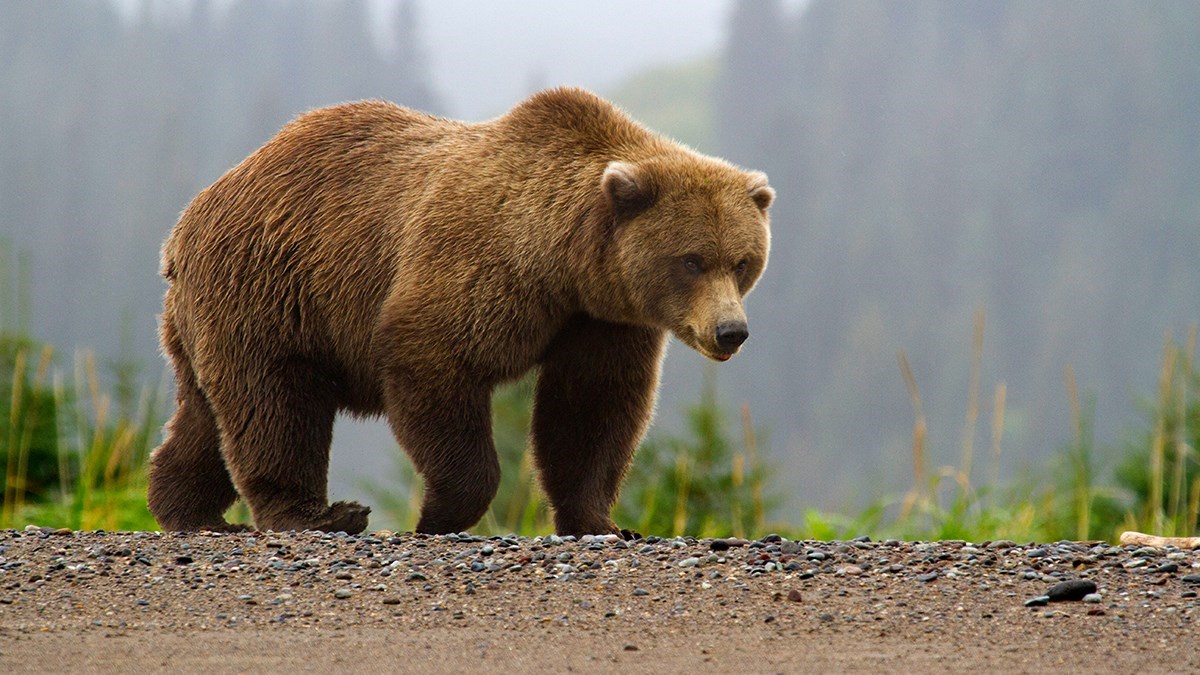Central British Columbia Mountain Forests
The ecoregion’s land area is provided in units of 1,000 hectares. The conservation target is the Global Safety Net (GSN1) area for the given ecoregion. The protection level indicates the percentage of the GSN goal that is currently protected on a scale of 0-10. N/A means data is not available at this time.
Bioregion: Greater Rockies & Mountain Forests (NA13)
Realm: Northern America
Ecoregion Size (1000 ha):
13,973
Ecoregion ID:
350
Conservation Target:
61%
Protection Level:
1
States: Canada: BC
The Central British Columbia Mountain Forests ecoregion is oriented northwest-southeast and lies to the east of the Coast Mountains. It encompasses part of the Rocky Mountain Trench, most of the Hart Ranges of the Rocky Mountains, the remote Omineca Mountains to the northwest, and the eastern ranges of the Skeena Mountains further to the northwest.
This mostly wild ecoregion lies to the north of the major Rocky Mountain parks of Canada, such as Banff and Jasper National Parks. It is bounded on the north and northwest by the Pacific Coastal Mountain Icefields and Tundra ecoregion and the Northern Cordillera Forests ecoregion. To its west are the British Columbia Coastal Conifer Forests and the Fraser Plateau and Basin Conifer Forests ecoregions; to the east are the Alberta-British Columbia Foothills Forests and the Mid-Canada Boreal Plains Forests ecoregions; and to the south-southeast is the Northern Rockies Conifer Forests ecoregion.

The flagship species of the Central British Columbia Mountain Forests ecoregion is the grizzly bear. Image credit: Courtesy of NPS.gov
Prince George, the largest city in northern British Columbia, lies within this ecoregion. Despite its wild character, a mere 6% of the Central British Columbia Mountain Forests ecoregion is protected. With 57% of the area outside protected areas still intact, however, excellent opportunities remain for further designation of protected areas before logging and other threats expand.
The climate of the Central British Columbia Mountain Forests ecoregion is classified as alpine and subalpine southern Cordilleran and features a mean annual temperature of 2ºC, a mean summer temperature of 12ºC, and a mean winter temperature ranging from -10ºC to -7ºC. Elevations in the Skeena Mountains and Omineca Mountains peak at around 2,400 m.
Vegetation zoning follows the elevation gradient, with low-elevation forests dominated by interior western redcedar in the Skeena Mountains and vicinity, and by lodgepole pine, quaking aspen, and white and black spruce in the eastern portion of the ecoregion. Subalpine areas feature Engelmann spruce, subalpine fir, lodgepole pine, and white spruce. Areas of alpine tundra at the highest elevations are dominated by various species of heath plants (family Ericaceae), sedges, and mountain avens.
Given the remoteness of most of this ecoregion, wildlife populations are still mostly intact and include woodland caribou, elk, moose, black-tailed deer, black bear, grizzly bear (high population density), wolf, wolverine, marten, red fox, beaver, snowshoe hare, ruffed grouse, and other vertebrates. Rugged slopes are inhabited by bighorn sheep and mountain goats. Dall sheep also occur in this ecoregion within 150 km of bighorn sheep populations. Omineca Provincial Park and Protected Area, in the relatively isolated Omineca Mountains, contains a calving ground for the at-risk northern woodland caribou, important winter moose range, and high-quality habitat for wolverine and mountain goat.
Besides mountain and forest habitat, lakes and wetlands are significant in this ecoregion. Carp Lake Provincial Park has extensive glacial features, sandy beaches, and some of the healthiest fish populations in this part of Canada.ii The windward side of the Hart Ranges have extensive wetlands. The Rocky Mountain Trench is considered a major north-south flyway for migratory birds.
This ecoregion remains mostly wild but is threatened by intensive logging, which under current schedules will remove virtually all commercially valuable forest within a few decades. The dammed reservoir of Williston Lake blocks east-west movement of wildlife across the Rocky Mountain Trench and interferes with north-south movement. With only 6% of the ecoregion protected, expansion of protection is urgent.
Priority conservation actions for the next decade are to: 1) vastly increase designation of conservation lands, especially to include mid and low elevations and valley bottoms, as well as to maintain critical wildlife movement corridors; 2) improve forest management and drastically reduce the rate of logging; and 3) increase public awareness of this wild but relatively little-known region of Canada.
Citations
1. Ricketts, T.H. et al. 1999. Terrestrial Ecoregions of North America: A Conservation Assessment. Island Press, Washington, D.C.
2. Ecological Stratification Working Group. 1995. A National Ecological Framework for Canada. Environment Canada and other agencies, Ottawa.
3. Central British Columbia Mountain Forests. Global Species. https://globalspecies.org/ecoregions/display/NA0509
.jpg?auto=compress%2Cformat&w=1600)


